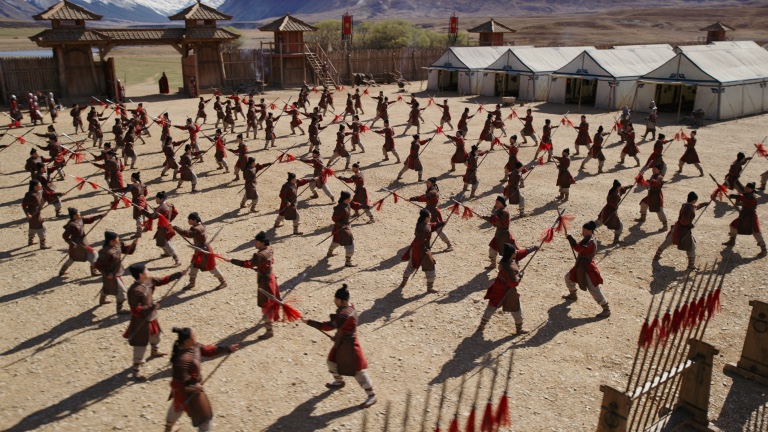
It’s fair to say that things are not entirely quiescent. The news during our visit was full of an agreement that the government will stop bombing the last remnants of armed groups in the south of the country in an effort to make the current negotiation process in Cuba more effective. Even so, sitting in the capital, Bogotá, enjoying toast and strawberry jam, those problems seemed exactly as far away as they were, which is very far away indeed. More of that excellent local coffee, please, waiter.
 And of course, a little disclosure is necessary at this point: Proimágenes Colombia, the national film board, is the sponsor of this trip, providing travel, accommodation and meals, finishing the trip in the coastal city of Cartagena. On the decidedly tropical Caribbean coastline, the climate is very different to that of Bogotá, which is at an altitude such that incoming aircraft aren’t required to descend into a landing so much as simply lower the landing gear as the mountaintop passes beneath.
And of course, a little disclosure is necessary at this point: Proimágenes Colombia, the national film board, is the sponsor of this trip, providing travel, accommodation and meals, finishing the trip in the coastal city of Cartagena. On the decidedly tropical Caribbean coastline, the climate is very different to that of Bogotá, which is at an altitude such that incoming aircraft aren’t required to descend into a landing so much as simply lower the landing gear as the mountaintop passes beneath.
Warm or cool, Colombia is certainly very serious about encouraging filmmaking. Government incentives, (implemented as a cash refund rather than a tax rebate), are currently generous, at 40% on production services and 20% on logistics, and the country’s third city of Medellín is offering an additional 15% to film there, given the reasonable paperwork and a minimum spend that translates from the Colombian peso as about half a million U.S. dollars. The query, of course, is always whether the local production infrastructure is sufficient to support a spend big enough to make the incentive worthwhile.
 Certainly good work is already being done. Fox has put down roots (no doubt cheering the eager people at Invest in Bogotá) by purchasing a 51% stake in Telecolombia. The broadcaster, which owns both stages and postproduction infrastructure in the capital, is producing some good-looking drama using techniques – which we’ll discuss anon – which are more than good enough to raise a few eyebrows in Europe or the U.S. Another broadcaster, Caracol, is part of a very large conglomerate which has at least the potential to implement a vertically integrated production and exhibition business much in the same vein as the Hollywood of old. Both are producing material in Spanish and, increasingly, English for an international market, and the material is of high quality.
Certainly good work is already being done. Fox has put down roots (no doubt cheering the eager people at Invest in Bogotá) by purchasing a 51% stake in Telecolombia. The broadcaster, which owns both stages and postproduction infrastructure in the capital, is producing some good-looking drama using techniques – which we’ll discuss anon – which are more than good enough to raise a few eyebrows in Europe or the U.S. Another broadcaster, Caracol, is part of a very large conglomerate which has at least the potential to implement a vertically integrated production and exhibition business much in the same vein as the Hollywood of old. Both are producing material in Spanish and, increasingly, English for an international market, and the material is of high quality.
The practicalities, including availability of crew, stages and equipment, are perhaps most fairly described as workable and expanding. A production requiring multiple large stages, big cranes, huge lighting packages, and half a dozen units with matched lens sets might currently struggle a little. However, collaborative agreements between local business with rental facilities in Mexico mean that reasonably upscale shows should find no serious difficulty in obtaining equipment given reasonable notice. Since this can be done through local companies, the tax incentives keep working. Crewing is perhaps a slightly less well-known quantity, with no formal union and therefore no rate card, although the sets we saw at Telecolombia seemed to be producing good-looking material, and there is at least a seed of practiced capability there. Given the number of young people graduating annually from Bogotá’s many institutions of higher education, this would seem to be a problem that’s solvable more or less as quickly as people can be trained – though of course, to some extent, this is a vicious circle with regard to available work.

Medellín, by contrast, is warmer and drier, and despite being described as the city of eternal spring it felt very much like a particularly warm northern European summer there last Monday. Reliable weather is of course a boon to location shoots, although as with any tropical locality rain can be sudden and torrential and almost without warning at some times of year. It’s unfortunate, and these days a little unfair, that Medellín is so famous as the headquarters of some of the most notorious drugs trafficking of the 1980s, as it currently seems to be a place of some charm, combining patches of both traditional and modern architecture and districts of restaurants and entertainment that seem populated largely by locals.

The Colombian Tax Rebate
 Colombia offers a cash rebate, as opposed to a tax incentive, for film production inside the country. TV episodes aren’t eligible, although TV movies are. The 40% refund figure applies to what the Colombian Film Commission calls “film services,” which includes artistic and technical services, and a 20% rebate on logistics, including travel, catering and accommodation. Naturally enough, the rebate applies only to money spent with Colombian companies.
Colombia offers a cash rebate, as opposed to a tax incentive, for film production inside the country. TV episodes aren’t eligible, although TV movies are. The 40% refund figure applies to what the Colombian Film Commission calls “film services,” which includes artistic and technical services, and a 20% rebate on logistics, including travel, catering and accommodation. Naturally enough, the rebate applies only to money spent with Colombian companies.
The Colombian law which controls how this works is #1556 of 2012, which states that the minimum spend is about $500,000 (U.S.) and that the project will be evaluated by the Colombia Film Promotion Committee in regard to its positive influence on the local film industry, tourism, and the international reputation of the country. The project must be at least partially shot in Colombia and the producers are expected to establish a trust in the country to hold the relevant funds, presumably to guard against suddenly-collapsing productions or various forms of sharp practice. In order for the refund to be paid, the producer must engage an auditing company, the report of which will form part of the required paperwork for the release of funds.
The first port of call in any case is Proimágenes Colombia (http://www.proimagenescolombia.com/), who need to see proof of the established production company, information on the budget and a deposit of guarantee of $11,000.
A further 15% incentive – which can be combined with the nationwide 40% film services refund – is available in the city of Medellín, with details available at http://filmmedellin.com/.





